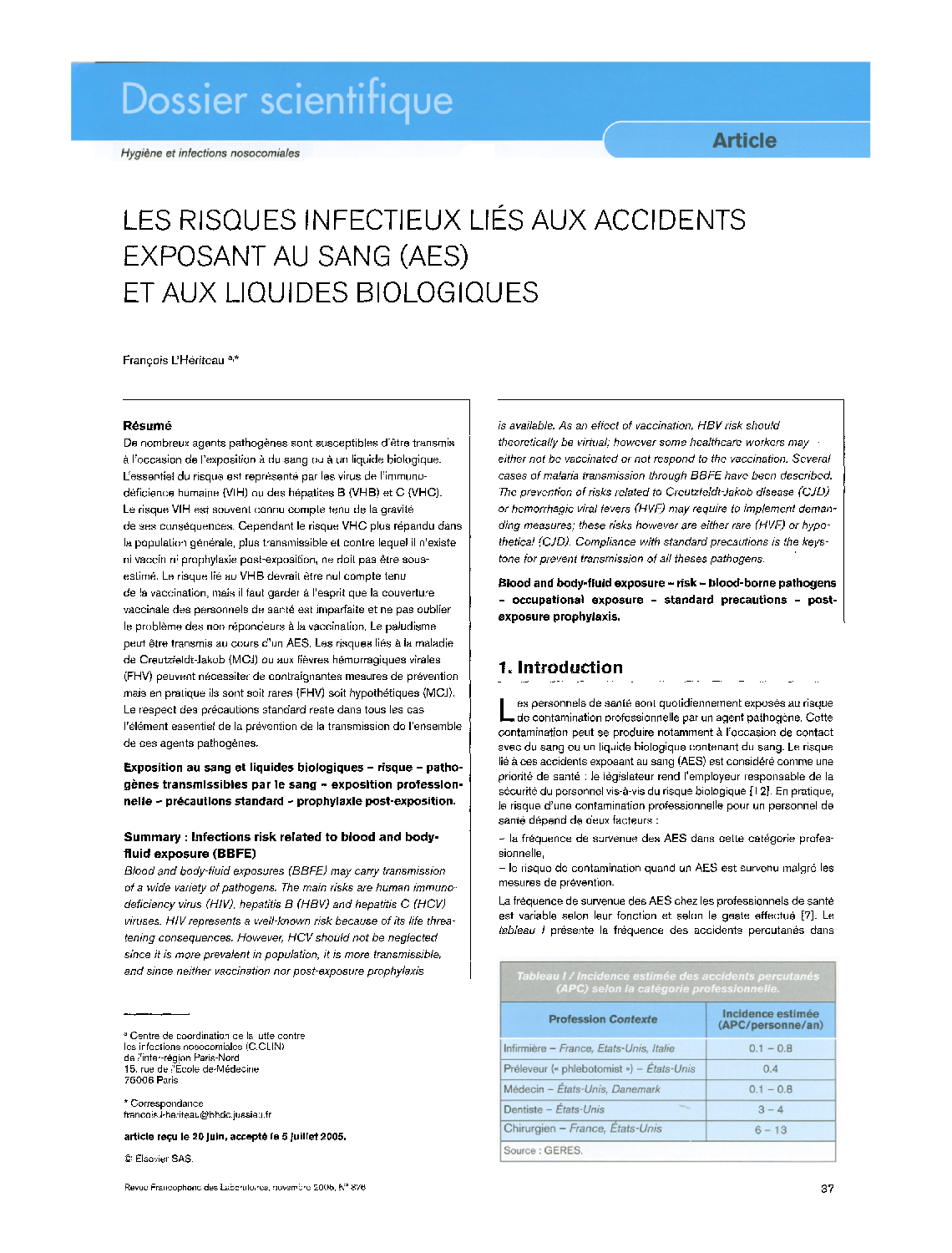| Article ID | Journal | Published Year | Pages | File Type |
|---|---|---|---|---|
| 9756791 | Revue Francophone des Laboratoires | 2005 | 7 Pages |
Abstract
Blood and body-fluid exposures (BBFE) may carry transmission of a wide variety of pathogens. The main risks are human immunodeficiency virus (HIV), hepatitis B (HBV) and hepatitis C (HCV) viruses. HIV represents a well-known risk because of its life threatening consequences. However, HCV should not be neglected since it is more prevalent in population, it is more transmissible, and since neither vaccination nor post-exposure prophylaxis is available. As an effect of vaccination, HBV risk should theoretically be virtual; however some healthcare workers may either not be vaccinated or not respond to the vaccination. Several cases of malaria transmission through BBFE have been described. The prevention of risks related to Creutzfeldt-Jakob disease (CJD) or hemorrhagic viral fevers (HVF) may require to implement demanding measures; these risks however are either rare (HVF) or hypothetical (CJD). Compliance with standard precautions is the keystone for prevent transmission of all theses pathogens.
Keywords
Related Topics
Physical Sciences and Engineering
Chemistry
Analytical Chemistry
Authors
François L'Hériteau,
